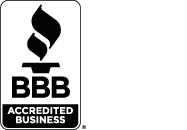Maybe you had an emergency come up and you realize you need to save $1,000 this month.
Or maybe you are wanting to save a $1,000 emergency fund as soon as possible.
Or maybe your friends just invited you on a trip and need some cash to join them.

Whatever your reason for wanting to save $1,000, in this article I am going to arm you to successfully save $1k and share a few of the best ways to save money that I have used to save $1,000 and beyond many times.
I have been writing about money-saving strategies for over 14 years as my full-time job. As you can guess, I have seen all the hyper-frugal recommendations like reusing ziplock bags, turning your lights off when you leave a room, or cancelling Netflix.
Those are all fine and great if that’s what you are into, but super-frugal tips like that are realistically probably not going to even help you save $1,000 in the next year.
So if you want to save $1,000 in a month, in 3 months, or even in 6 months, you are going to need some better ideas.
So in this guide we will be covering some of the best ways you can save your first $1,000 as fast as possible. We will also be covering:
- How to make a plan to save
- The Save $1,000 Challenge
- How and why to make savings automatic
- Where you might want to open a savings account
- How you can track your savings with one of my favorite free apps
- How to save $1,000 if you are living paycheck to paycheck
- An advanced strategy for saving $1,000
With that intro out of the way, let’s get to it.
Make a plan
Saving $1,000 might seem like a lot, but let’s break it down into it’s smaller parts to get a handle on it.
- If you want to save $1,000 in a month, that is $33 a day or about $250 a week.
- If you want to save your $1,000 in 3 months, you’d need to be saving $11 a day or about $83 a week.
- If you wanted to reach your savings goal in 6 months, you could pull it off by saving about $5.50 a day or $42 a week.
So when you see it like this, it can seem a lot more manageable.
Or think in saving percentages…
Now depending on your income it might just be a lot easier to think in terms of percentages.
For example, if your monthly take home pay is $3,500 and you saved 10% of your income ($350/month) you would reach your savings goal in just 3 months.
With that same income if you just raised your savings percentage to 15%, you would now reach your savings goal in less than 2 months.
So regardless of how you choose to think about it, you need to make a plan as to how much you need to be saving each day, month, or paycheck so that you can stay on track to reach your savings goal.
Open a savings account.
It’s no secret that savings accounts’ interest rates aren’t real great these days. But since a savings account is going to pay you passive income in the form of interest, you should still be saving in a savings account rather than under your mattress.
With rates being where they are, you aren’t going to get rich off the interest earned, and if you have one already that is sufficient to get started.
But if you need some recommendations on some of the best savings accounts out there here are a couple of my favorites:
CIT bank Savings Builder account
CIT does something a little different than most banks. If you can save $100 a month, they will give you their top tier savings rate (normally reserved for those only with a $25k balance).
And it is consistently one of the best paying savings accounts out there, so that’s worth checking out.
Ally bank
Ally bank is the one I use most because they work so well with the Real Money budgeting method.
They too also consistently have industry leading savings rates.
Make your savings automatic
Successful people, in pretty much any sphere, will seek to eliminate the dependence on self-discipline whenever possible. And as much as possible they seek to make the most important tasks automatic.
Habits author James Clear explains it this way, “If you want better results, then forget about setting goals. Focus on your system instead…you do not rise to the level of your goals. You fall to the level of your systems.”
The same principle most certainly applies with our finances. People who are great with money don’t have more self-discipline to always make good financial decisions. Rather they set up systems to make good financial decisions automatic: the default.
Rather than waiting for inspiration or self-discipline to save money, they make it automatic or as simple as possible.
Financially successful people understand it isn’t about willpower but is simply about making important financial decisions automatic.
So how do you make savings automatic?
This can be done as simply as setting up an automatic monthly withdrawal from your checking to your savings account – which should be possible at just about every bank.
But one of my favorites is an app I use called Acorns. The reason it is so great is because you never “feel” it or notice it at all.
Here’s why: they function off the round-up principle. So say you spend $8.50 at Chipotle, Acorns will round up your purchase to $9.00 and save that 50 cents for you.
If you do that with each and every purchase, you never really notice it all, and yet you can save a considerable amount each month.
Here is the kicker
Not only do they save the money for you, but they also invest it into Vanguard index funds so that your money has the potential to earn more than your savings account.
Now, with it being invested in the stock market there is a chance you could lose a bit of your money if the market takes a turn. But with the stock market average return of 10% over the last 100 years, there is some good upside potential.
It’s certainly not for everyone, but just wanted to share it here as I have found it to be a great way to automate savings to reach a savings goal.
Get started saving with Acorns here
Track your progress with a FREE tracking app
You might also want to track your progress to your savings goal with one of my favorite money apps out there.
It’s called Personal Capital and it allows you to track your spending, savings, even see when you will be able to retire.
It is a fantastic tool and it is completely free.
Control your spending
Let’s talk about controlling your spending because for most people this is the biggest challenge to successfully saving $1,000.
So how do you control your spending?
The answer is different for a lot of people because there are a lot of reasons WHY people spend – and overspend. But here are a few suggestions that should help nearly everyone.
- Do it first. As in when you get paid, make it at the top of the list of things that happen first. For us it goes like this: we give first, then we save, then we pay for everything else.
- Make it automatic. Like I mentioned in a previous point, if you can remove your willpower from the equation it gives you a much better chance of succeeding. So do whatever you can to make it automatic.
- Get accountability. This is why I tested out dozens of different budgeting methods and approaches and nothing worked for me. There was no accountability. This is also why we created the Real Money Method – and what makes it so great.
- Eliminate temptation. If scrolling Instagram or Pinterest tempts you to buy stuff, then delete the apps. If Amazon is a temptation, delete your credit card information. Every little bit of “friction” you put in the way to make it more difficult to spend will help.
- Pray. In Psalm 46 it says that God is our “refuge and strength and a very present help in our time of need”. He is able when we are not able in our own strength.
3 of the best tips to begin your journey to saving $1,000
1. Billcutterz
This is a no-brainer. Basically, they are a bill discount service. All you do is send them your bills and they call your providers and negotiate better rates on your behalf.
You then split the savings with them. From their website: “We split any savings we obtain with you. This means if we save you $100, you get $50 and we get $50. If we don’t save you any money, there is no charge to you ”“ ever.”
Many of their customers save hundreds of dollars each month – without doing any of the work.
Get started with Billcutterz here.
2. Sell stuff (seriously)
I challenged myself to sell junk around my house and in 30 days I made $2,147. Here is exactly how I did it.
And here is a video where I show exactly how to sell something on Ebay:
3. Save money on groceries
Most people have hundreds of dollars of savings available to them by shopping smarter at the grocery store. You have probably heard about those extreme couponers who go to the grocery store and actually walk out with a cart full of groceries – FOR FREE.
The reason is because coupons work.
And if your goal is just to save $1,000 then you don’t need to go extreme here, but just attempting to use a few coupons and buying things on sale could easily save most families a few hundred dollars a month.
- You can go here to start printing some:
- if you are into organics, here are some ways you can get those as well.
Or if you insist on not using coupons, you should at a minimum change your mindset about how you buy groceries and you still could easily save many hundreds of dollars.
The video below (about 7 years old at this point, but still works) will help you do that.
Advanced strategy for saving $1,000
I consider this to be an advanced strategy that certainly isn’t for everyone. If you consistently use credit cards responsibly and don’t carry a balance, this could be a win for you.
There is currently a promo with my favorite credit card of all-time: the Chase Sapphire Preferred.
They are offering an insane 100,000 point signup bonus. For those new to Chase points, this is equivalent to $1,250 of travel or they can be cashed out for $1,000 cash.
So they are literally paying you $1,000 to open the card.
You can read more about all the details of this promotion here to see if it is right for you.
So there you have it.
You are now armed and equipped to save $1,000 in a month or two if you really want it.
Got any money-saving tips or suggestions? Or want to report back on your progress towards saving $1,000?
Let us know in the comments.




